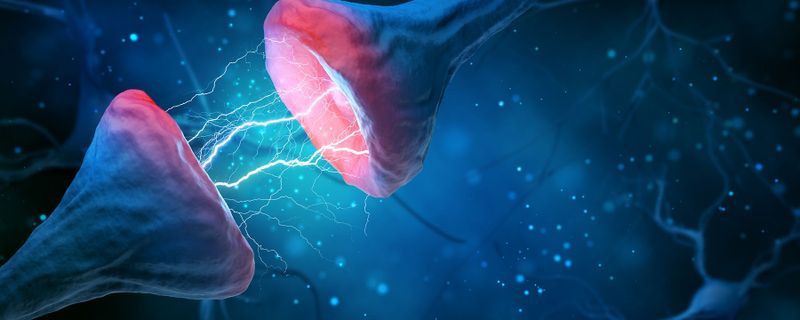ABOVE: © MELANIE LEE; SUZAN ÖZUGUR AND HANS STRAKA; © NIKLAS ELMEHED © NOBEL PRIZE OUTREACH; DRAGAN MERIC; EDUARDO FERNÁNDEZ, MIGUEL HERNÁNDEZ UNIVERSITY
A sense-ational Nobel
On October 4, physiologist David Julius and neurobiologist Arden Patapoutian were awarded the Nobel Prize in Physiology or Medicine for their work on temperature, pain, and touch perception. Julius researched the burning sensation people experience from chilies, and identified an ion channel, TRPV1 that is activated by heat. Julius and Patapoutian then separately reported on the TRPM8 ion channel that senses menthol’s cold in 2002. Patapoutian’s group went on to discover the PIEZO1 and PIEZO2 ion channels that are involved in sensing mechanical pressure. The Nobel Committee wrote that the pair’s work inspired further research into understanding how the nervous system senses temperature and mechanical stimuli and that the laureates “identified critical missing links in our understanding of the complex interplay between our senses and the environment.”

Brains interface with computers
This year saw innovations in augmenting the brain’s capabilities by plugging it in to advanced computing technology. For example, a biology teacher who lost her vision 16 years ago was able to distinguish shapes and letters with the help of special glasses that interfaced with electrodes implanted in her brain. Along a similar vein, a computer connected to a brain-implant system discerned brain signals for handwriting in a paralyzed man, enabling him to type up to 90 characters per minute with an accuracy above 90 percent. Such studies are a step forward for technologies that marry cutting-edge neuroscience and computational innovation in an attempt to improve people’s lives.

Communicating with dreamers
It’s not quite Inception, but researchers reported this year in Current Biology that they were able to communicate with people having lucid dreams. Using a combination of Morse code and verbal communication, the researchers presented simple math problems and yes/no questions to study participants, several of whom answered correctly using previously established eye signals. In an interview, coauthor Kristoffer Appel said the study opens up opportunities to study dreaming more interactively to explore questions such as how the narratives of dreams are developed.

Photosynthesis-powered brains
In one of the year’s stranger developments, researchers were able to supply tadpoles with oxygen using photosynthetic microorganisms, allowing for continued brain function even under hypoxic conditions. The team injected photosynthetic algae into tadpoles kept in low-oxygen conditions, and upon exposure to light, the concentration of oxygen in the animals’ ventricles increased and their brain activity resumed. Still, the finding’s applicability to animals where light would not be able to penetrate the skin and reach the brain is limited.

Linking synapse size and strength
Synapses allow neurons to communicate with each other through the release and receipt of neurotransmitters prompted by electrical action potentials. A study by researchers in Zurich, Switzerland, confirmed long-held suspicions that synapses with larger surface areas are stronger, meaning that they can release more neurotransmitter to a receiving neuron per electrical impulse. The researchers calculated synapse sizes using electron microscopy and measured synapse strength by recording voltage changes with a tiny electrode in mouse brain samples. They found greater voltage changes in synapses in which neurotransmitter receptors are located across a larger surface area of the neuron, along with data suggesting that multiple neurotransmitter vesicles are released with each action potential. Stephanie Rudolph, a neuroscientist at Albert Einstein College of Medicine who was not involved with the study, said this last finding “profoundly alters the way we think about the predominant mode of synaptic transmission.”

Single-celled brain models
It turns out that model organisms don’t necessarily need to have a brain in order to contribute to neuroscience research. Yeast, which was first recognized as a key model of neurodegenerative diseases in the 1990s, continues to lend valuable insights into neuroscience, especially as biomedical technology advances. Researchers can induce genetic modifications at low cost, quickly grow yeast cells that mimic disease processes, and observe them as a simple indicator of cell functioning and health, which has benefitted the investigation of a diverse range of neurodegenerative diseases for decades. Studies using yeast revealed the detrimental roles protein aggregation and damaged protein quality control play in Alzheimer’s disease, Parkinson’s disease, amyotrophic lateral sclerosis (ALS), and Huntington’s disease. Furthermore, researchers have used yeast to learn about transport between the nucleus and cytoplasm in ALS and dementia, defective mitochondrial functioning in Friedreich’s ataxia, and impaired vesicle trafficking in Alzheimer’s disease.

A controversial milestone
Biogen’s Alzheimer’s drug Aduhelm (aducanumab) was approved by the US Food and Drug Administration on June 7, making it the first approved therapy aimed at slowing the progression of the disease. But the drug quickly drew controversy focused on whether it does indeed make a meaningful difference to that progression, as well as its high cost. The FDA approved the drug against the recommendation of its own advisory panel—several members of which have subsequently resigned—and later called for a federal investigation into its approval process.







